According to a study, the top result in Google’s organic search has an average click-through rate (CTR) of 27.6%. With this, it’s vital for business and website owners to boost their search engine rankings. One proven ranking factor is a strong backlinking strategy.
While there are lots of ways to get backlinks for your site, many SEO sites suggest building a backlink pyramid. This tiered backlinking strategy is said to help you improve your domain authority and gain more organic traffic.
But does it really work? Will a backlink pyramid really boost your SEO?
In this post, we’ll help you answer those questions and more. To delve deeper into how backlink pyramids can affect your SEO, we’ll look at different statistics and analyze real-world examples. But first, let’s refresh our knowledge on backlinks.
The role of backlinks in SEO
In essence, backlinks are like a “vote of confidence” for search engines. The more backlinks you have from trusted sites, the more trustworthy your site is for search engine algorithms. As a result, your content will be prioritized in search engine results.
While many people might tell you that backlinks aren’t as important now as they were before, they are still one of the few confirmed Google ranking factors. Meaning, it’s still a huge factor in SEO.
In fact, an Ahrefs study shows that the more backlinks a page has, the more organic traffic it gets from Google. Most SEO professionals also agree that it’s almost impossible to rank on Google’s first page without any backlinks.
What is a backlink pyramid?
A backlink pyramid is a backlinking strategy that classifies links into three different tiers depending on their importance and the “link juice” it’s passing to your site.
Tier 1 links are composed of direct inbound links to your site. Pages that link to these direct inbound links are considered tier 2 links. While tier 3 links are domains that link to your tier 2 links. In short, a backlink pyramid is about creating backlinks for your backlinks.
In most cases, tier 1 links are lesser than tier 2 links which, in turn, are usually more numerous than tier 3 links. If you visualize this, you’ll get a pyramid-shaped structure like this one:
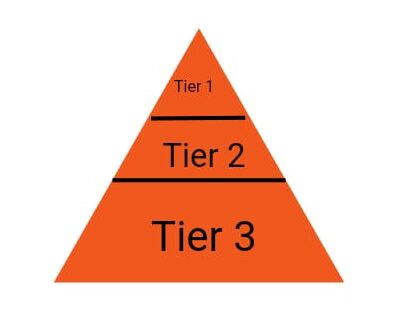
Since tier 1 links are directly linking to your site, they should be your top priority. Hence their position at the top of the pyramid.
But if tier 2 and tier 3 backlinks aren’t directly linking to your site, why do you still have to care about them? Can they still affect your SEO?
In SEO, there’s a concept that’s more commonly known as “link juice.” Under this, domains that link to your site pass some of their authority to your site.
A tier 3 backlink passes some of its link juice to your tier 2 links, boosting its domain authority. Your tier 2 links, in turn, pass some of that link juice to your tier 1 backlinks. Ultimately, your tier 1 backlinks (direct inbound links) pass that link juice to your site, making it more authoritative.
With this, the more tier 2 and tier 3 backlinks you have, the more link juice will be passed on to your tier 1 backlinks and to your site. This is why your tier 1 backlinks should be from high-authority sites since they tend to already have more backlinks, making your job a lot easier.
How each tier works
Tier 3
The main goal of tier 3 backlinks is to strengthen your tier 2 links. Since this does not directly affect your site, the quality of these links doesn’t matter. As such, tier 3 backlinks often include:
- Forum backlinks
- Low-quality directory links
- Blog comment links
- Web 2.0 backlinks
- Private blog network (PBN) links
Since domain quality doesn’t matter for this tier, it’s pretty easy to get them. That’s why they tend to be the most numerous among all the three tiers.
Tier 2
Although tier 2 backlinks don’t directly affect your site, they still affect the authoritativeness of your direct inbound links. So domain quality will matter at this point. That said, tier 2 backlinks often include:
- Social media backlinks
- Press release links
- High-quality directory links
- High-quality web 2.0 backlinks
- Social media profile links
Tier 1
At the top, we have the tier 1 links. These domains directly link to your site and pass the highest link juice. As such, their quality and domain authority are of the utmost importance. This tier usually includes:
- Guest post links on high authority sites
- Citation links
- Resource page links
- Editorial links from high-quality sites
- Links from government sites
- Links from .edu sites
Since most high-authority sites have strict content quality standards, getting backlinks from them can be tough. In most cases, you’ll need to publish an original study or groundbreaking information to get a single citation or editorial link from these sites.
[Case Study] Increase crawl budget on strategic pages
How effective are backlink pyramids?
The views on backlink pyramids are highly contrasting. The pro backlink pyramid squad believes that the strategy still works. On the other hand, critics believe that the strategy isn’t totally legit since it can manipulate the whole backlink-building process.
To settle the debate once and for all, let’s look at what Google and real-life data are saying.
What Google says
In an interview, John Mueller of Google stated that the total number of your site’s backlinks doesn’t matter. Instead, SEOs should focus on quality, adding:
“We try to understand what is relevant for a website, how much we should weigh these individual links, and the total number of links doesn’t matter at all. Because you could go off and create millions of links across millions of websites if you wanted to, and we could just ignore them all.
Or there could be one really good link from one website out there that is, for us, a really important sign that we should treat this website as something that is relevant because it has that one link. I don’t know, maybe from like a big news site’s home page, for example. So the total number essentially is completely irrelevant.”
What he’s saying is consistent with the principle behind backlink pyramids since the strategy prioritizes quality over quantity for tier 1 backlinks.
That being said, the backlink pyramid strategy still seems to work fine as long as the mix of all the backlinks makes sense to Google.
However, if the backlinks in your backlink pyramid strategy are irrelevant, they can affect your website’s ranking.
Adding to his statement, Mueller suggests that backlink profiles will be a crucial ranking factor in the future too, so having a strong backlink strategy is beneficial, at least at this point.
“To some extent, links will always be something that we care about because we have to find pages somehow. It’s like how do you find a page on the web without some reference to it?”
However, in a live Q&A session, Mueller also has this to say about the importance of links in the future:
“But my guess is over time, it won’t be such a big factor as sometimes it is today. I think already, that’s something that’s been changing quite a bit.”
Analyzing real-world examples
In theory, a backlink pyramid is a great way to boost your organic traffic. But does it work in real life?
To answer that, we’ll analyze the backlink profiles of the biggest sites today. Note, however, that there’s no one metric to measure the site’s backlink pyramid. However, if a site has high-authority tier 1 domains pointing to it, it’s safe to assume that such tier 1 links have a high number of tier 2 and tier 3 backlinks.
So, for this section, we’ll focus on the quality of the backlinks each site has instead of the quantity.
1. Forbes.com
Let’s start with Forbes.com, a popular PR website. As of this writing, the site boasts the following SEO figures:
- Organic traffic: 113.7 million
- Total number of backlinks: 358.5 million
- SEMrush authority score: 100
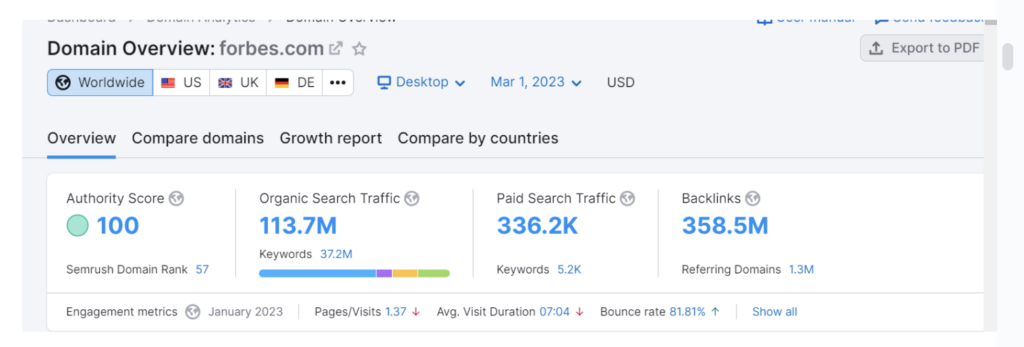
Now, let’s have a look at how these 358.5M backlinks are distributed.
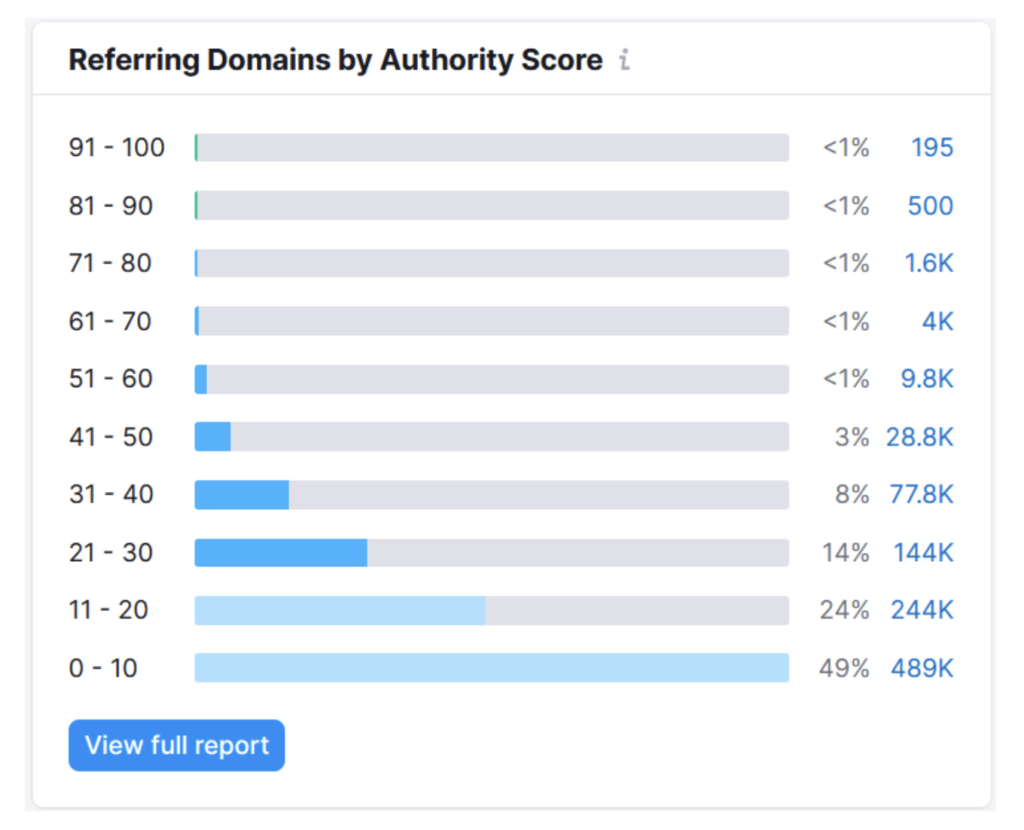
From the screenshot above, we can gather that:
- There are around 195 backlinks from sites with 91 to 100 domain authority.
- 500 from 81 to 90 domain authority.
- Going down the spectrum, we see 489k backlinks with 0-1 domain authority.
With these stats, it is clear that Forbes.com has more high-quality backlinks than most websites. To put this in context, most sites will count themselves lucky if they get even a single backlink from sites with authority scores of 91-100.
One of the high-authority sites linking to Forbes is msn.com. If you check this site’s backlink, you’ll see that it has lots of high-authority backlinks too, which for Forbes can count as tier 2 backlinks.
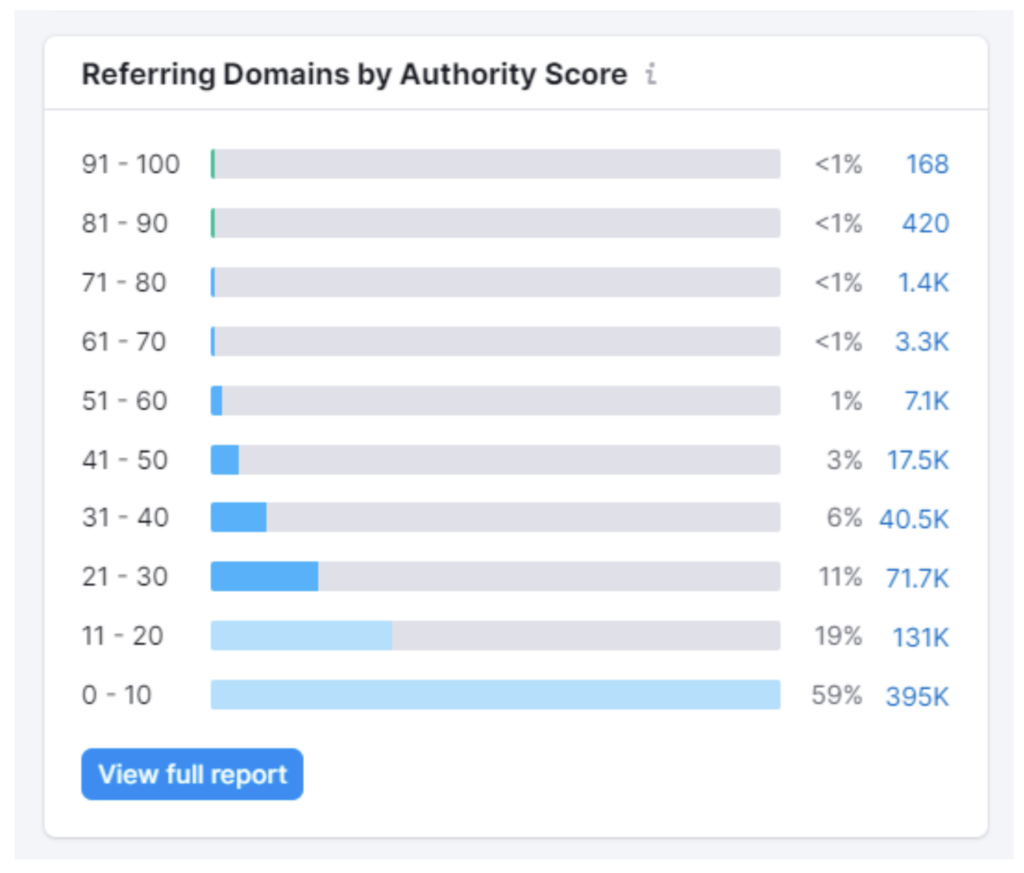
2. Techradar.com
- Organic Traffic: 13.7 million
- Total number of backlinks: 219.5 million
- SEMrush authority score:82

Here is a look at the referring domains for techradar.com:
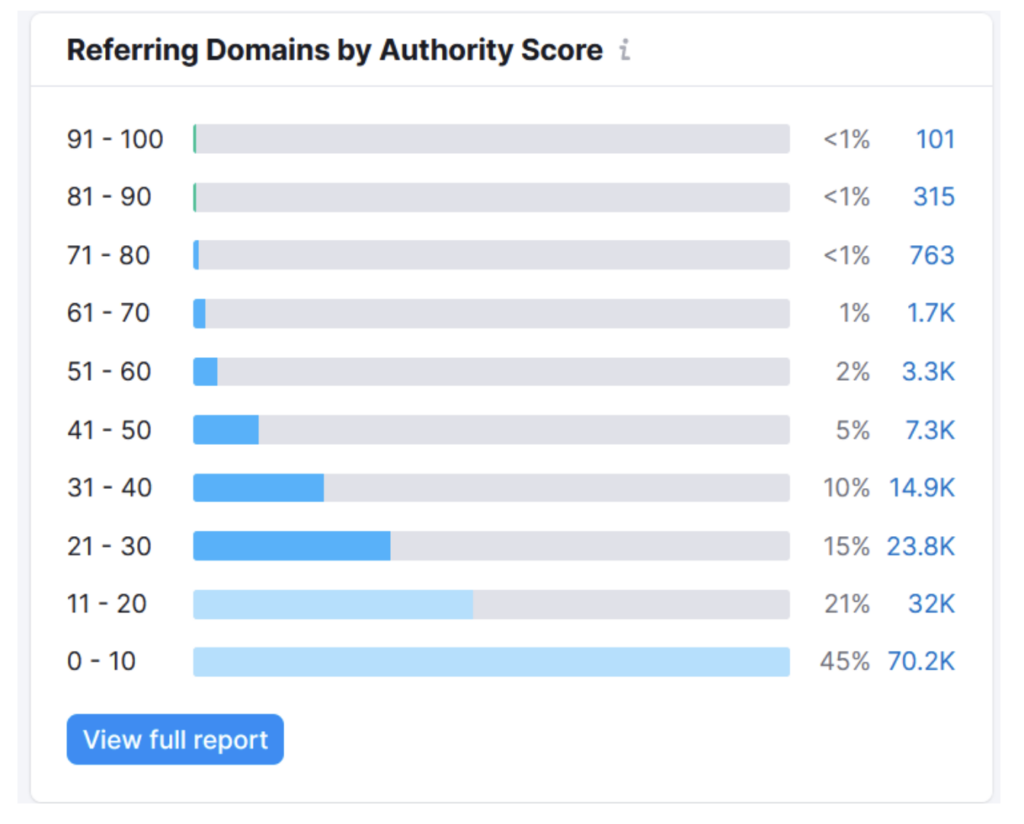
Backlinks analysis
- There are 101 backlinks with 90-100 domain authority websites.
- 315 backlinks from 81-90 DA websites.
- 70.2k backlinks from 0-10 DA websites.
Like Forbes, Techradar.com also has lots of high-quality backlinks. So it’s also safe to assume that it has a lot of high-quality tier 2 and tier 3 backlinks as well.
3. Entrepreneur.com
For the third example, we have picked Entrepreneur.com, a site that focuses on finance and money-making.
- Organic traffic: 3.3 million.
- Total number of Backlinks: 224 million
- SEMrush domain authority score: 73
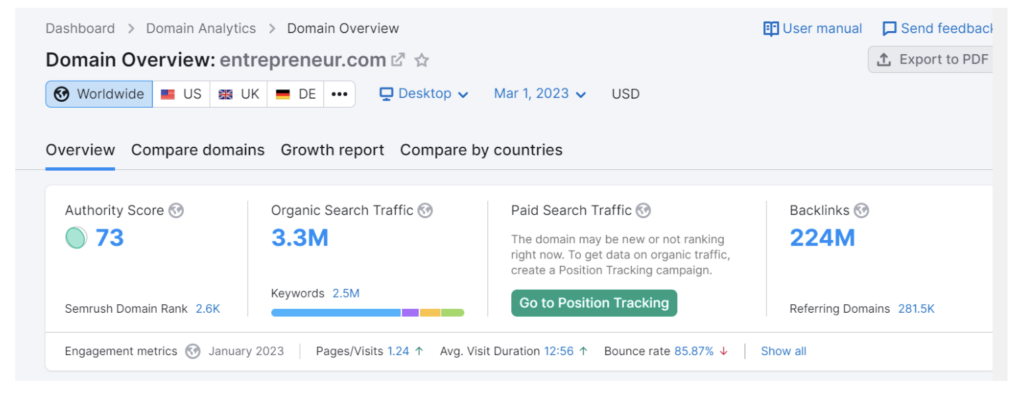
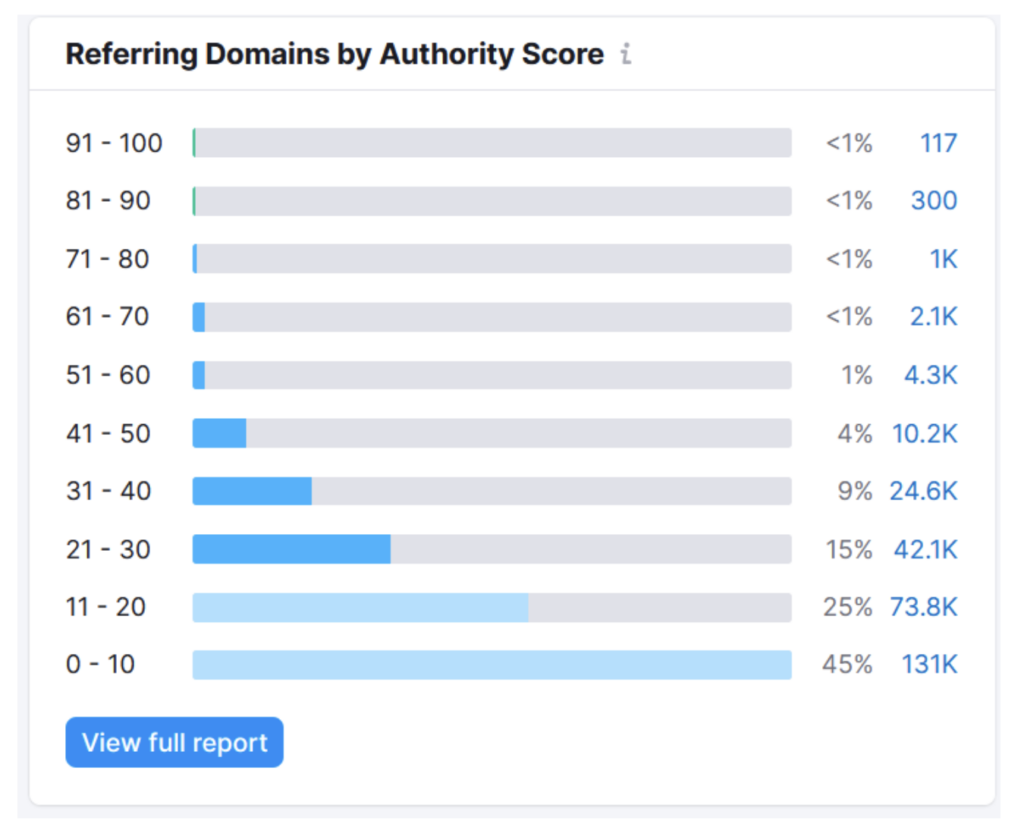
Based on the screenshot above, this site’s backlinks are distributed as follows:
- There are 117 backlinks with 90-100 domain authority websites.
- 300 backlinks from 81-90 DA websites.
- 131k backlinks from 0-10 DA websites.
From the data above, we can infer that the backlink pyramid strategy is also working for Entrepreneur.com.
With all these, we can conclude that the backlink pyramid strategy does help with SEO. However, there are lots of other factors that can affect your organic search traffic. So you should use this in conjunction with other SEO strategies to ensure better search rankings.
Ready to take your backlinking strategy to the next level?
After considering the complexity of how backlink pyramids work, one can see why there is so much debate about their effectiveness.
While we can all agree that backlinks play a critical role in SEO and search engine rankings, it’s hard to determine the exact impact that backlink pyramids have on SEO.
From the discussion above, building multiple layers of links can help increase website visibility and search engine rankings. However, this approach may cause more harm than good if not properly executed. As such, it’s important to do thorough research and explore various options before implementing a backlink pyramid strategy.
Moreover, as Google algorithms continue to evolve with time making more accurate calculations regarding website rankings, the effectiveness of backlink pyramids is likely to change – so keep that in mind.
Now that you’ve read up on all things related to backlink pyramids and SEO, are you ready to take your backlinking strategy to the next level?

